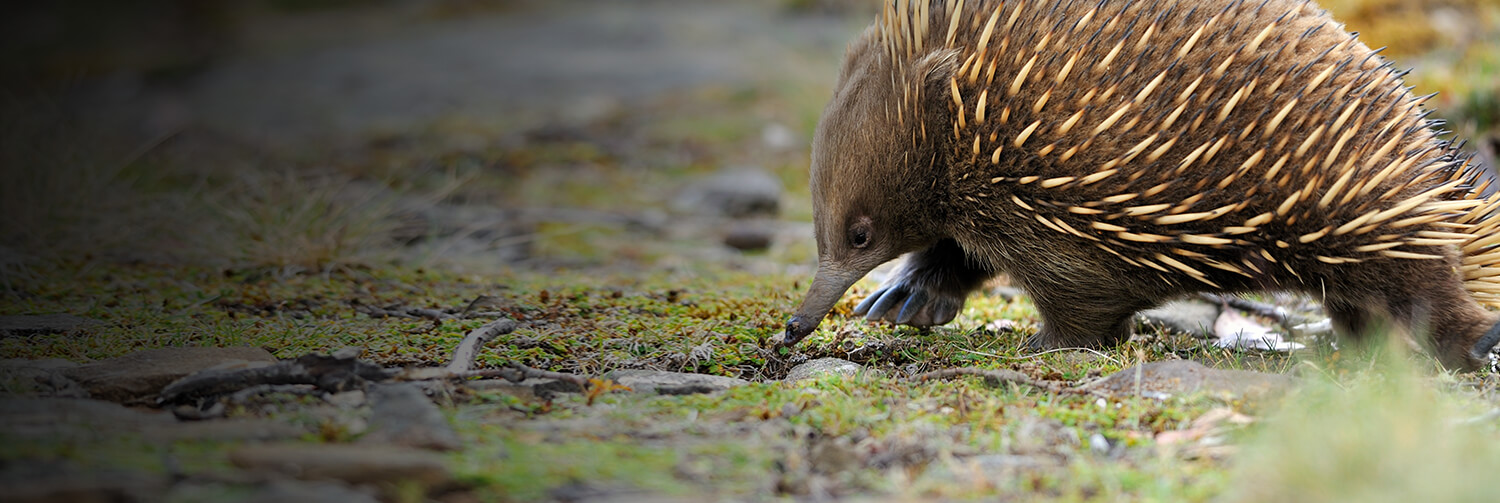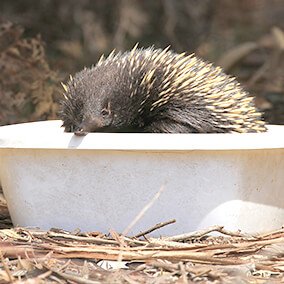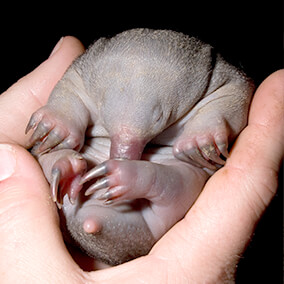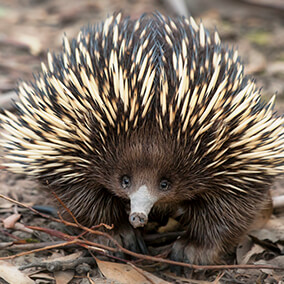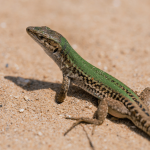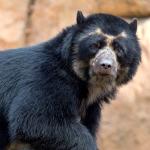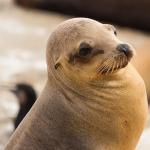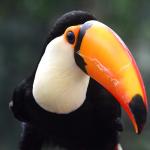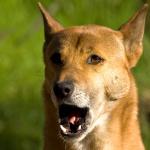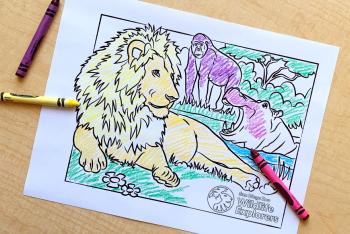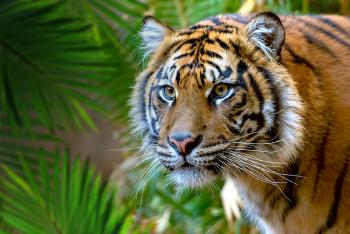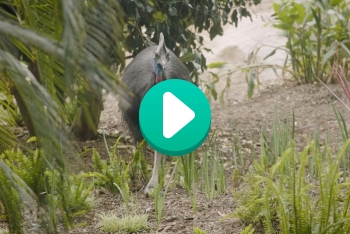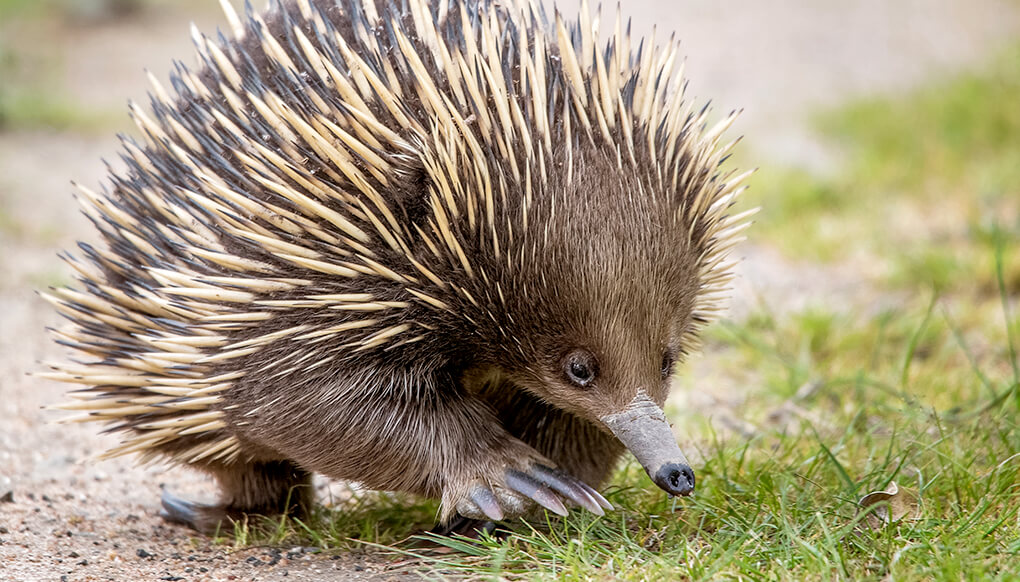
Echidna
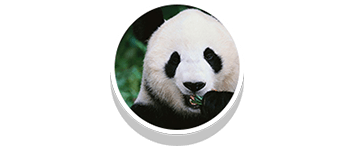
Mammals
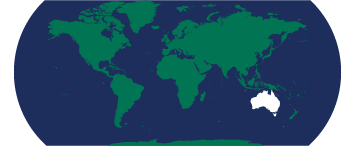

Some Endangered
facts
Most echidnas are less than 18 inches long. The eastern long-beaked species is larger.
Echidnas eat termites, ants, and grubs (larvae).
Long-beaked echidnas live mostly in hilly rainforests of New Guinea.
In Australia, you might find short-beaked echidnas just about anywhere—from snowy mountains, to tropical rainforests, to deserts. You would have to look hard, though. These unique mammals are well camouflaged, and they like to hide.
description
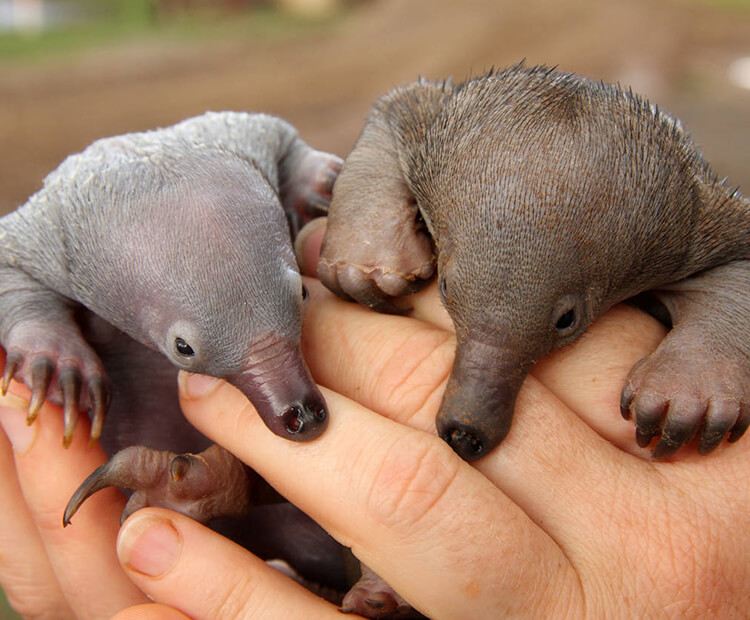
description
Echidnas and the platypus are the only mammals that lay eggs. A female echidna is pregnant for only about three weeks. Then, she lays one soft, leathery egg that’s about the size of a grape. She nudges her egg into her pouch, and it hatches about 10 days later. Fortunately for the mother, the baby does not yet have spines!
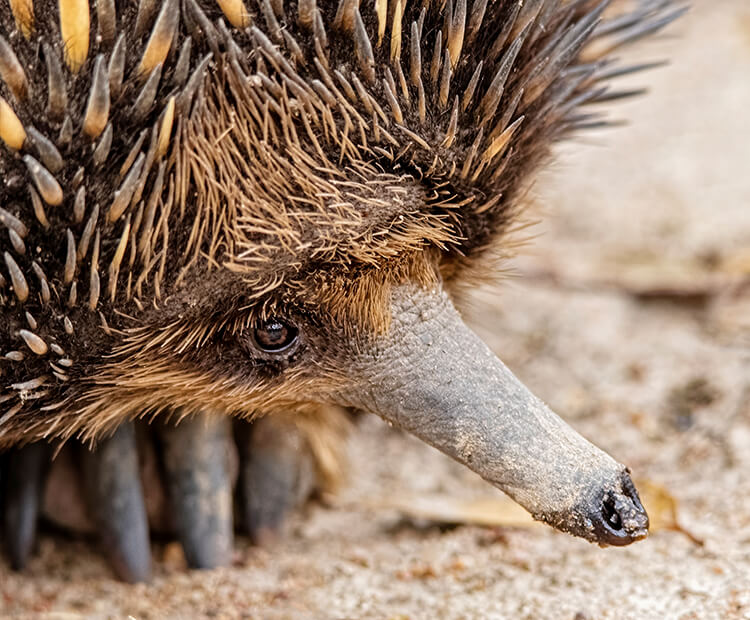
What's with the beak?
With a keen sense of smell, an echidna sniffs out its next meal with the help of nostrils near the tip of its beak. Its beak is rubbery—not hard like a duck's bill. But, it is strong enough to pry into soil, hollow logs, and termite mounds in search of insects.
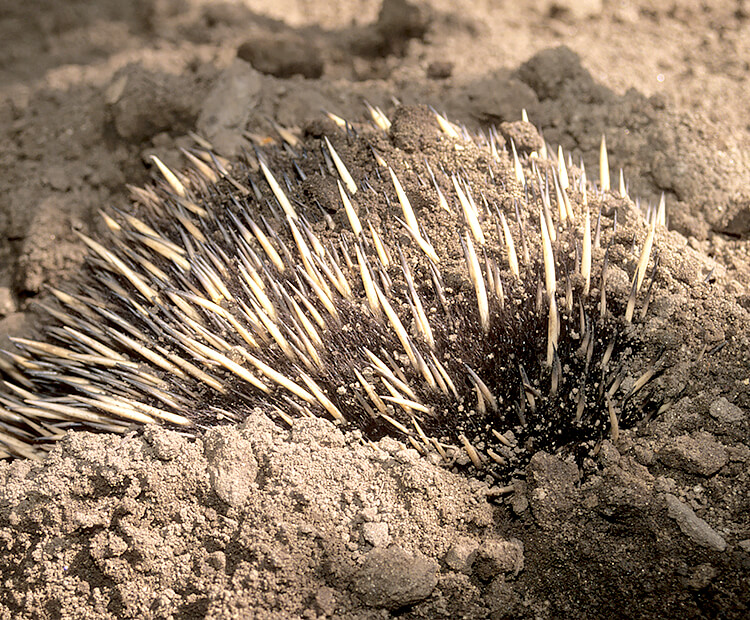
Diggers
With tough claws and short but powerful front feet, an echidna can quickly dig straight down into the earth until only its spiny rear end can be seen. Mother echidnas dig a burrow for hiding when caring for an egg or a baby. Echidnas are also good at tearing apart a termite mound or a rotting log to find food.
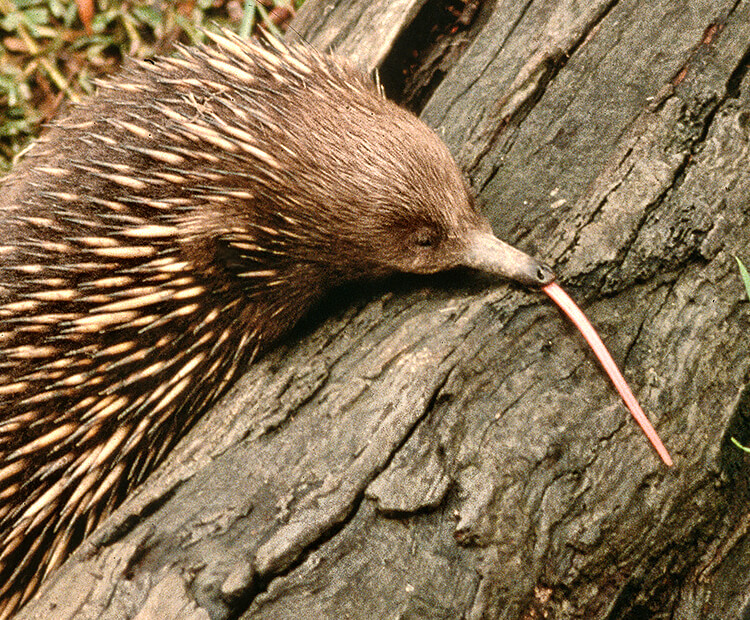
No teeth needed
An echidna’s tongue is sticky, slender, and 7 inches long! That’s how an echidna catches ants, termites, and grubs. Echidnas don’t have teeth. Hard pads at the base of the tongue and on the roof of its mouth grind food into a paste for swallowing.

